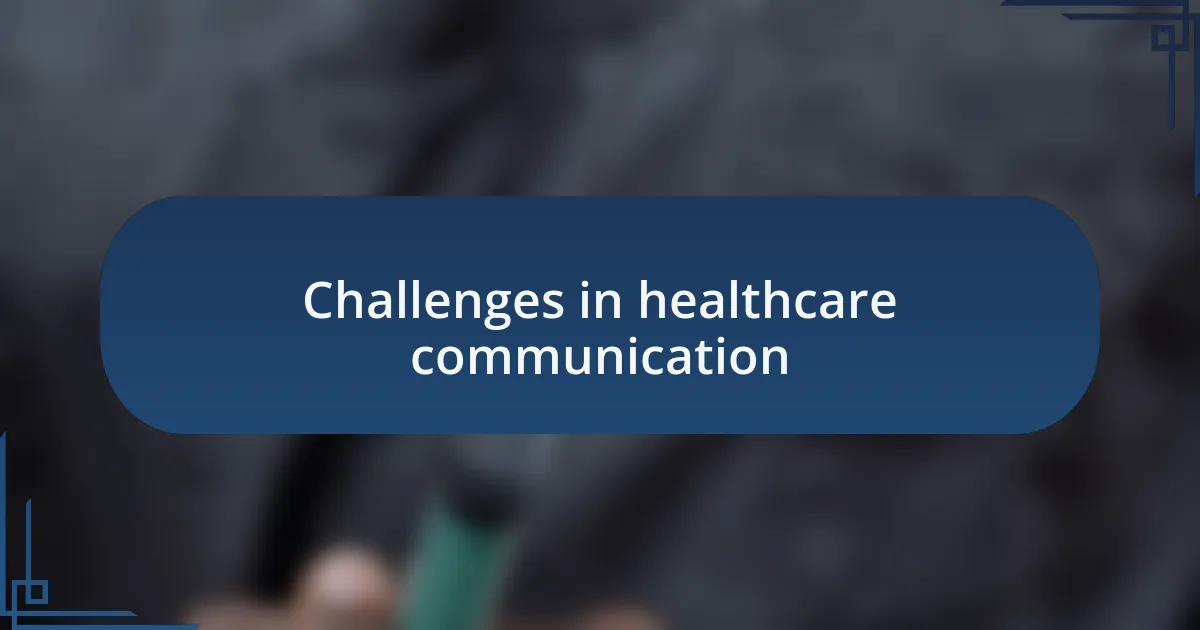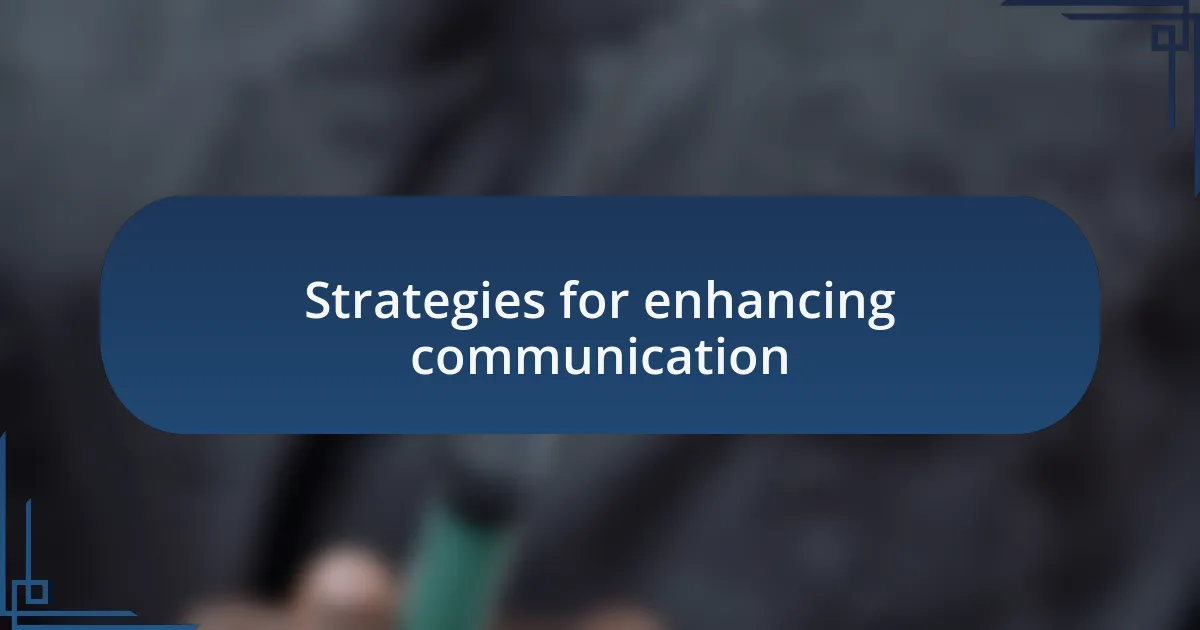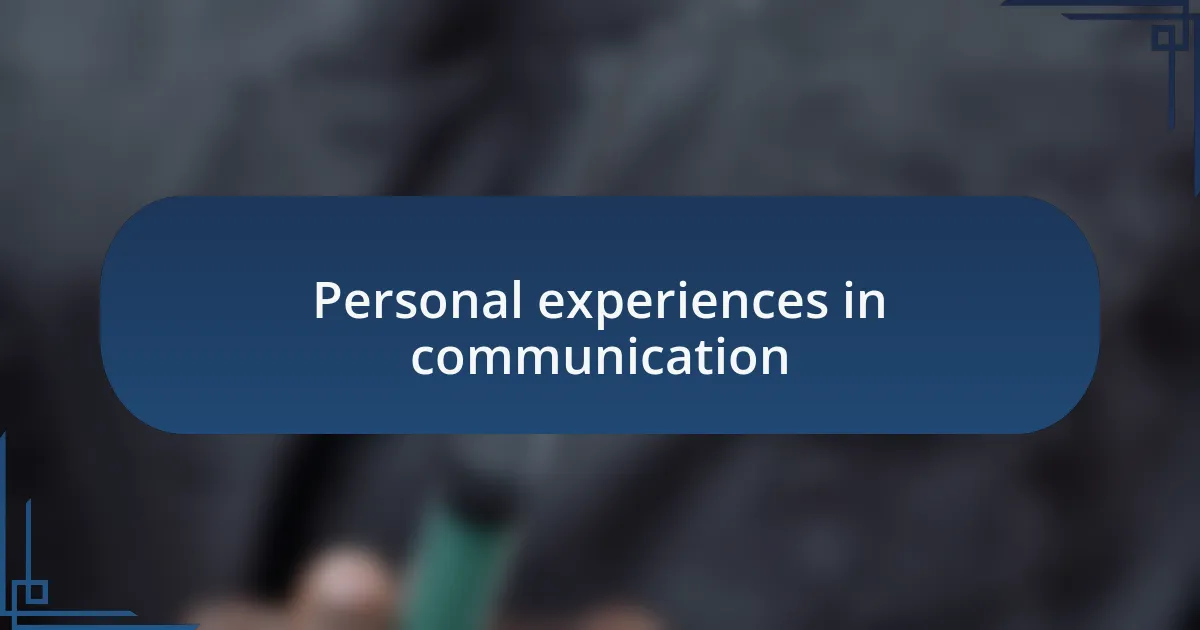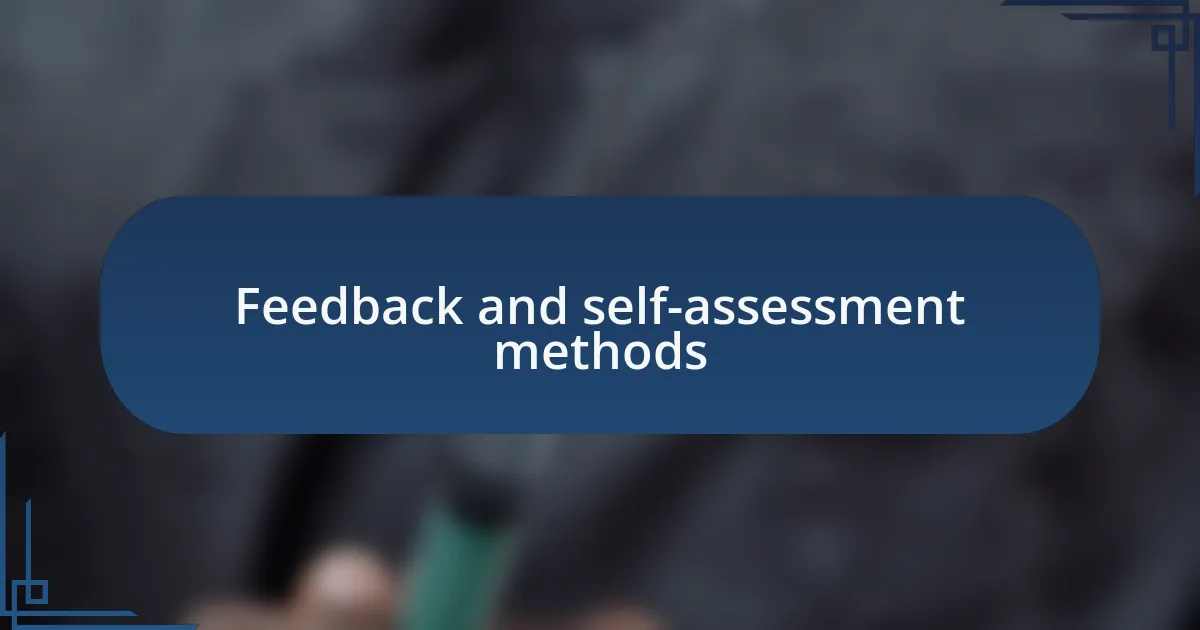Key takeaways:
- Medical terminology should be simplified to ensure patients understand their health and treatment options.
- Active listening and empathy are essential for building trust and improving patient-provider communication.
- Non-verbal cues, such as body language, significantly affect the quality of healthcare interactions.
- Feedback and self-assessment are vital for enhancing communication skills in healthcare settings.

Challenges in healthcare communication
In my experience, one of the biggest challenges in healthcare communication is the complexity of medical terminology. I remember struggling to explain a diagnosis to a friend who wasn’t familiar with common terms. It made me realize just how vital it is to translate jargon into language that everyone can understand. How can we expect patients to make informed decisions about their health if we don’t meet them at their level?
Another significant hurdle is the emotional landscape that often accompanies healthcare conversations. I once witnessed a patient break down in tears during a routine check-up, feeling overwhelmed by their illness. This situation highlighted that speaking from a clinical standpoint, while necessary, doesn’t address the emotional needs of patients. How can practitioners balance the need for clarity with compassion?
Lastly, time constraints often hinder effective communication in healthcare settings. I’ve felt the pressure of a ticking clock in various appointments, where meaningful discussions sometimes get cut short. Isn’t it disheartening when a patient leaves without all their questions answered, feeling more anxious than when they arrived? This imbalance between time and communication can lead to misunderstandings and ultimately impact patient care.

Strategies for enhancing communication
One effective strategy I’ve found for enhancing communication is to actively listen. This isn’t just about hearing words; it’s about understanding the emotions behind them. I remember a time when a patient shared their fears about a diagnosis, and instead of jumping to reassure them, I took a moment to really listen. This helped build trust and made them feel valued. How often do we rush through conversations without truly connecting?
Another approach is to simplify the information you share. I’ve learned that breaking down complex concepts into bite-sized pieces makes a significant difference. For instance, when explaining treatment options, I use everyday analogies that resonate with the patient’s experiences. This not only clarifies their choices but also empowers them in their healthcare journey. Aren’t we all more likely to engage when we understand what’s at stake?
Lastly, I find that incorporating visual aids can be a game-changer. During one appointment, I used diagrams to illustrate how a particular medication works. The patient’s eyes lit up with understanding, and it was clear they felt more confident about their treatment plan. Isn’t it fascinating how a simple image can bridge gaps in communication? Such tools can truly transform the way we interact in healthcare settings.

Personal experiences in communication
In my journey to improve communication, one notable experience stands out. I once facilitated a workshop for healthcare professionals where we role-played patient interactions. Initially, I felt nervous, but as we dove into each scenario, I realized how powerful it was to see things from the patient’s perspective. This hands-on experience solidified for me just how much empathy plays a role in effective communication. Have you ever found yourself stepping into someone else’s shoes?
Another memorable moment occurred while volunteering at a community clinic. I met a mother who struggled to understand her child’s chronic condition. I remember feeling her frustration; it resonated with me. So, I took the time to explain things in relatable terms, sharing personal stories of families I’d seen in similar situations. This connection through shared experiences transformed our dialogue from one of confusion to clarity and reassurance. How does sharing a personal anecdote change the way we communicate?
Finally, collaborating with a diverse team of healthcare providers taught me invaluable lessons in communication styles. During team meetings, we would often encounter misunderstandings due to differing backgrounds. I encouraged open discussions where everyone shared their communication preferences and challenges. What struck me was how fostering these conversations not only improved our efficiency but also strengthened our team bond. Have you ever noticed how teamwork can enhance not only individual skills, but collective understanding as well?

Feedback and self-assessment methods
Feedback and self-assessment are cornerstones of improving communication skills. In my experience, after leading informal training sessions, I often sought feedback from participants. I was surprised to learn that they appreciated my analogies but noted that I sometimes rushed through explanations. This constructive criticism helped me adapt my delivery style to be more engaging and clearer. How often do you seek feedback from your audience?
Another method I’ve found effective is self-assessment through reflection. After any communication-related task, I took a moment to evaluate my performance. I would ask myself questions like, “Did my message reach my audience?” or, “How did I feel during the interaction?” This simple practice allowed me to identify my strengths and areas for improvement, promoting a cycle of growth. Have you ever paused to assess your own communication?
Furthermore, I’ve utilized peer assessments with colleagues, where we would observe and critique each other’s communication styles. I vividly recall a session where a colleague pointed out my reliance on jargon. This observation made me aware of how important it is to tailor my language to my audience, ensuring clarity. When was the last time someone else’s perspective changed how you thought about your communication?

Role of active listening techniques
Active listening techniques play a crucial role in fostering effective communication, especially within healthcare settings. I remember a time in a team meeting where I consciously applied active listening by nodding and paraphrasing what my colleagues said. This simple act not only made them feel heard but also enriched my understanding, ultimately leading to more productive discussions and solutions.
During conversations with patients, I’ve discovered that asking open-ended questions significantly enhances active listening. One particular instance was when I asked a patient to share their concerns about a treatment plan. By providing them the space to voice their thoughts, I noticed their anxiety lessened, which in turn allowed for a more informed dialogue. How often do you give others the chance to express their worries in a safe environment?
I’ve also found the technique of summarizing key points particularly useful. For example, after discussing treatment options with a patient, I would summarize their main concerns and preferences to ensure I understood them correctly. This not only clarified any misunderstandings but also empowered patients, making them feel actively involved in their care. Can you think of a time when restating someone’s words led to a breakthrough in understanding?

Applying communication skills in practice
Applying communication skills in practice goes beyond just verbal exchanges; it encompasses the non-verbal cues we exhibit as well. I recall a moment during a patient consultation when I noticed a subtle shift in body language—the patient was crossing their arms and avoiding eye contact. Recognizing this unspoken distress, I adjusted my posture to be more open and inviting. It was fascinating to see how my change in demeanor resulted in them gradually relaxing, allowing for a more genuine conversation to unfold. Have you ever stopped to consider how your body language impacts your interactions?
In group settings, I’ve realized that prompting others to share their perspectives can create a more inclusive atmosphere. During a healthcare workshop, I encouraged quiet colleagues to voice their opinions by directly addressing them with open questions. The shift in dynamics was remarkable; it turned a typically one-sided discussion into a collaborative brainstorming session. How often do we underestimate the value of drawing out different voices in our conversations?
Moreover, using clear and concise language is critical, especially when discussing complex medical terms with patients. I learned this lesson during a follow-up appointment when I mistakenly used jargon that left my patient confused. Afterward, I made it a priority to simplify my explanations, breaking down concepts into relatable, everyday terms. This approach has not only improved my patients’ understanding but has also fostered trust in our communications. Have you experienced the relief that comes with clarity in conversation?